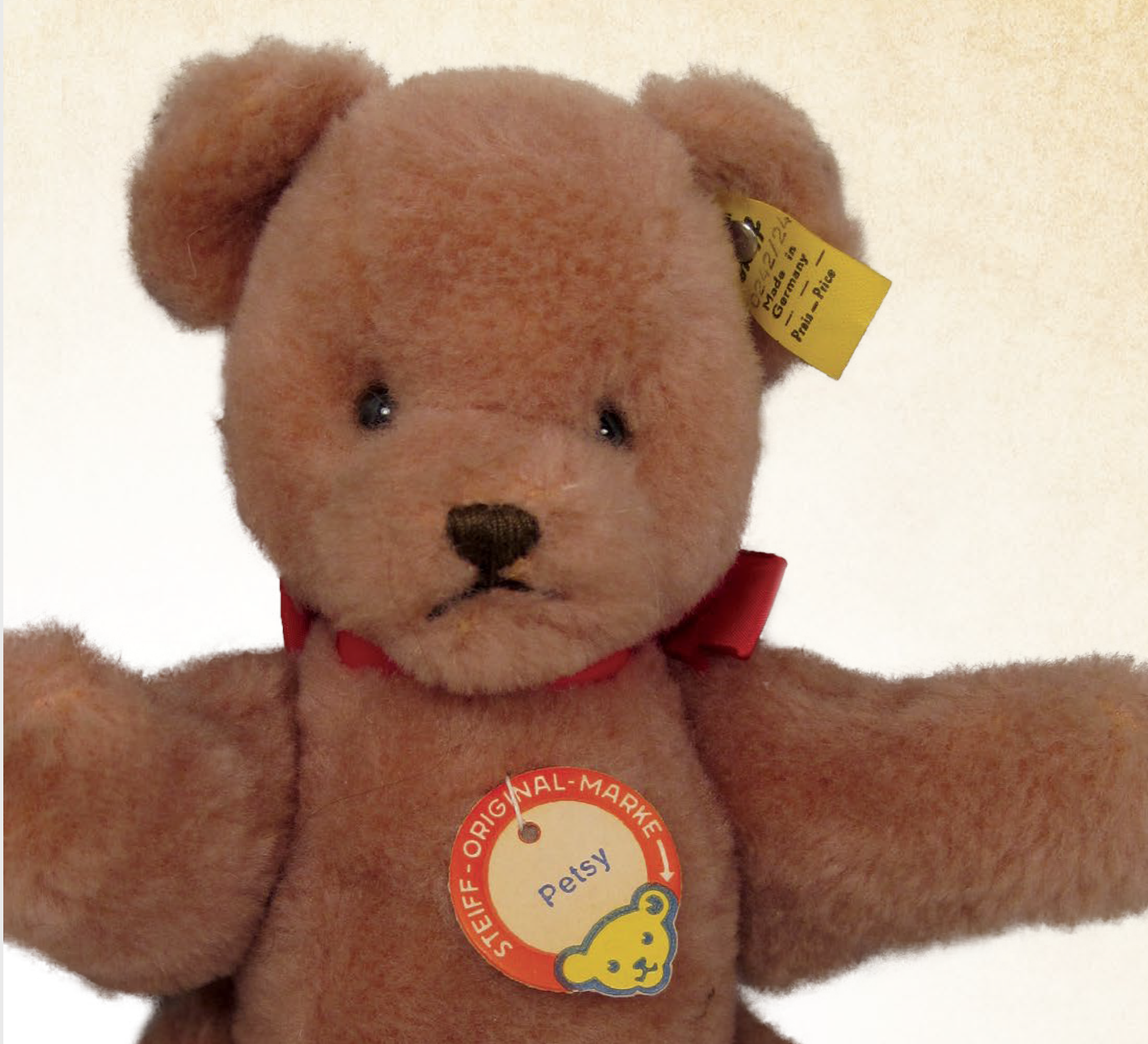Accurately Dating Vintage Steiff Bears
Wouldn't it be grand if they could talk and share their past lives with their current owners?
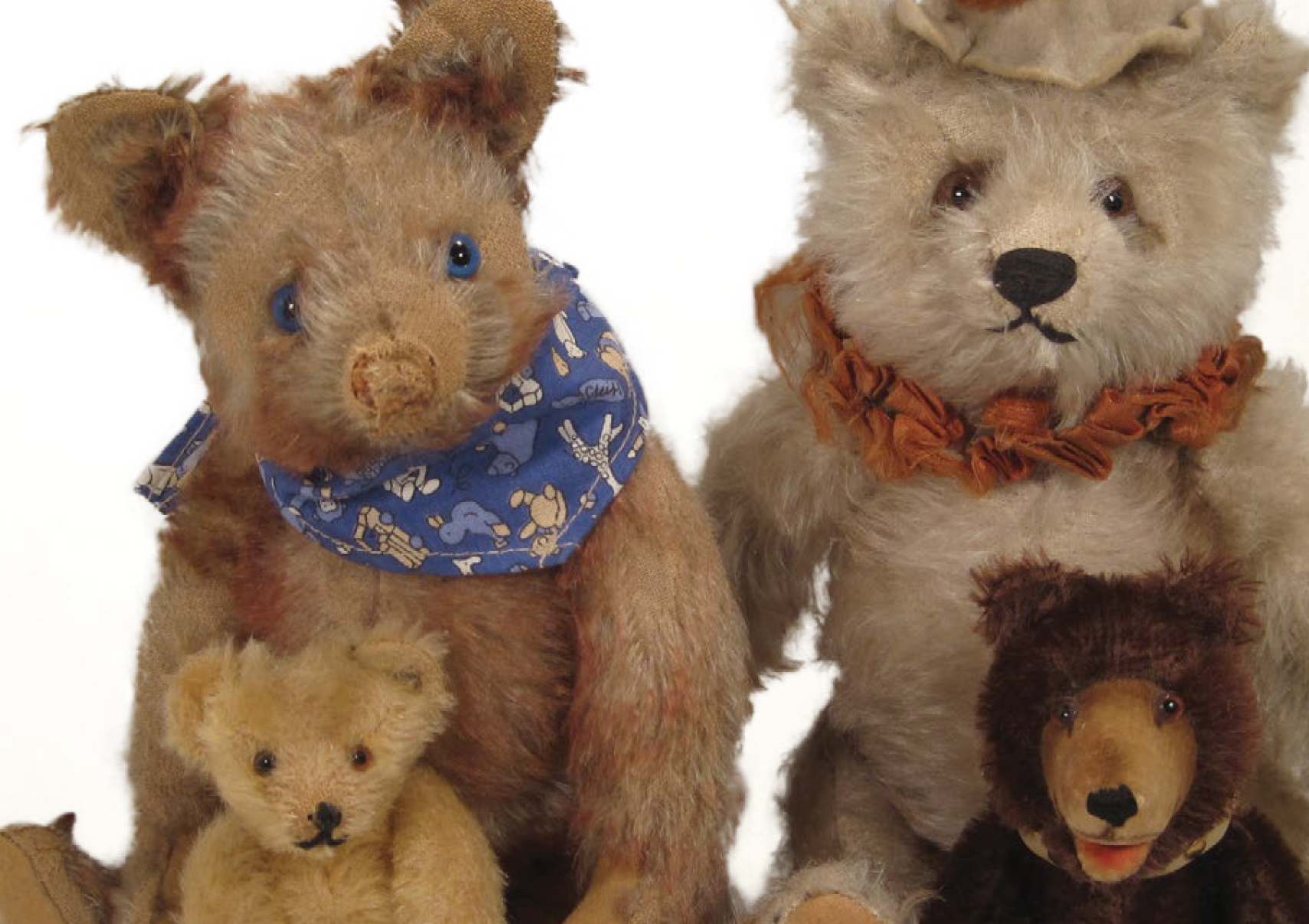
The Earliest Steiff Bears
The earliest Steiff bears were manufactured in 1902, and were string-jointed, excelsior-stuffed, and made from dark cinnamon-colored mohair. This very chunky-clunky toddler had black shoe-button eyes but did not have any Steiff ID. This model is so rare that he has only been seen in photos. If you think you may have an example, contact an expert immediately!
Steiff’s next teddy innovation happened around 1903-1904, when it produced a metal rod-jointed teddy. This pattern was produced in a number of different colors of mohair; I have handled examples in white, apricot, and blond. These cubs were all solidly stuffed with excelsior, had gutta percha noses, shoe-button eyes, and a simple embroidered mouth. Many had a distinctively puppylike appearance. Most rod-jointed bears left the factory in Giengen with a metal button embossed with an elephant. Used only briefly in 1904 and 1905, the elephant button is the earliest and most desirable Steiff button of all.
Through the mid 1920s
In 1905, Steiff made updates to its core bear design that would last through the mid-1920s. All Steiff bears now had a much lighter, play-friendly jointing system consisting of cardboard discs and metal pins. Their faces came to life with embroidered features and lightly shaved muzzles. Steiff generally used black shoe-button eyes on its bears through the early 19-teens. Brown and black glass pupil eyes appeared on some models as early as 1908 or 1909; they became standard around 1913. The earliest Steiff bears had five claws on each of their felt paws; from 1906 onward most had four per paw. Steiff bears from the early turn of last century were stuffed with excelsior, kapok, or a combination of both, depending on the size of the bear. Over time, these teds would appear in white, blond, brown, cinnamon, and apricot mohair.
Steiff’s bears from around 1905 through the mid-1920s had standard body measurements. The measurement from a bear’s chin to crotch was twice the measurement from the top of his head to his chin. His total height was five times the measurement of his footpad, from toe to heel. And in a standing position, his “fingertips” would brush where his knees would be. They also had physical features that have always had great appeal. These include pronounced back humps, hand-sewn mid-torso seams, and spoon-shaped paws.
Steiff bears from 1905 had blank buttons, and those from 1906 through the mid-1920s had buttons embossed with “Steiff,” with the vertical line of the second “f” turning into a tail that trailed back under the name, extending as far as the “e.” These “long trailing f” early examples also had white ear tags that changed slightly in size and imprint over their two decades of appearances.
Steiff Mid-’20s to Mid-’30s
Many collectors love Steiff’s bears from this period, and it’s easy to understand why. Steiff’s traditional bears from this era tend to appear quite playful and charming. They often have very youthful appearances, with longer mohair, unshaven muzzles, and oversized pupil eyes.
The 1920s were a period of great experimentation in terms of Steiff bear design and many novelties were introduced at that time. They include Teddy Rose, Teddy Clown, Teddy Baby, and Petsy. These patterns integrated colorful or tipped mohair, child-like proportions and expressions, and new details, including accessories as well as non-traditional stitching and eye colors.
Though 1925, Steiff’s bears were branded with a tiny long trailing “f” button and a white ear tag. In the 1925-1926 timeframe, Steiff’s branding was updated to include a larger long trailing “f” Steiff button, red ear tag, and a white circular metal-rimmed chest tag. In 1928, the metal-rimmed chest tag was replaced with a colorful, bear faced chest tag with red lettering.
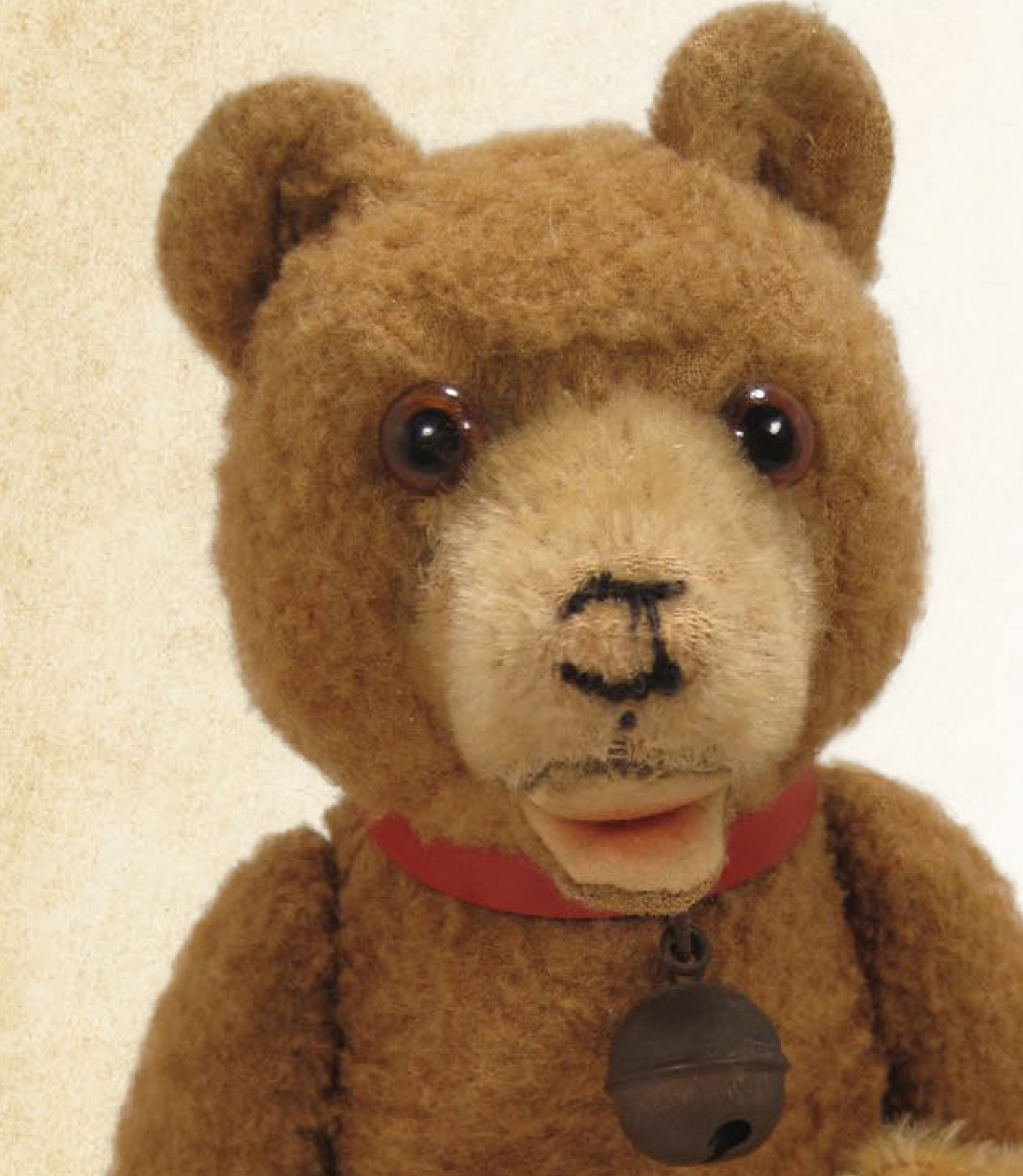
Steiff Mid-’30s to Early ’40s
This period of time was difficult in Germany, and some collectors say that this hardship is reflected in the look of Steiff bears produced then. It is not unusual for bears from this period to have leaner proportions and more moody facial expressions.
Because of material rationing, mohair and felt were at a premium and not readily available to toy companies. As such, Steiff started using wool plush instead of mohair and linen material instead of felt on some of its bears. For the most part, Steiff’s items from this period were branded with a red-lettered chest tag, a larger, long trailing “f” button, and a red ear tag through 1935, followed by a red-lettered chest tag, a short trailing “f” button, and a yellow ear tag through 1943.
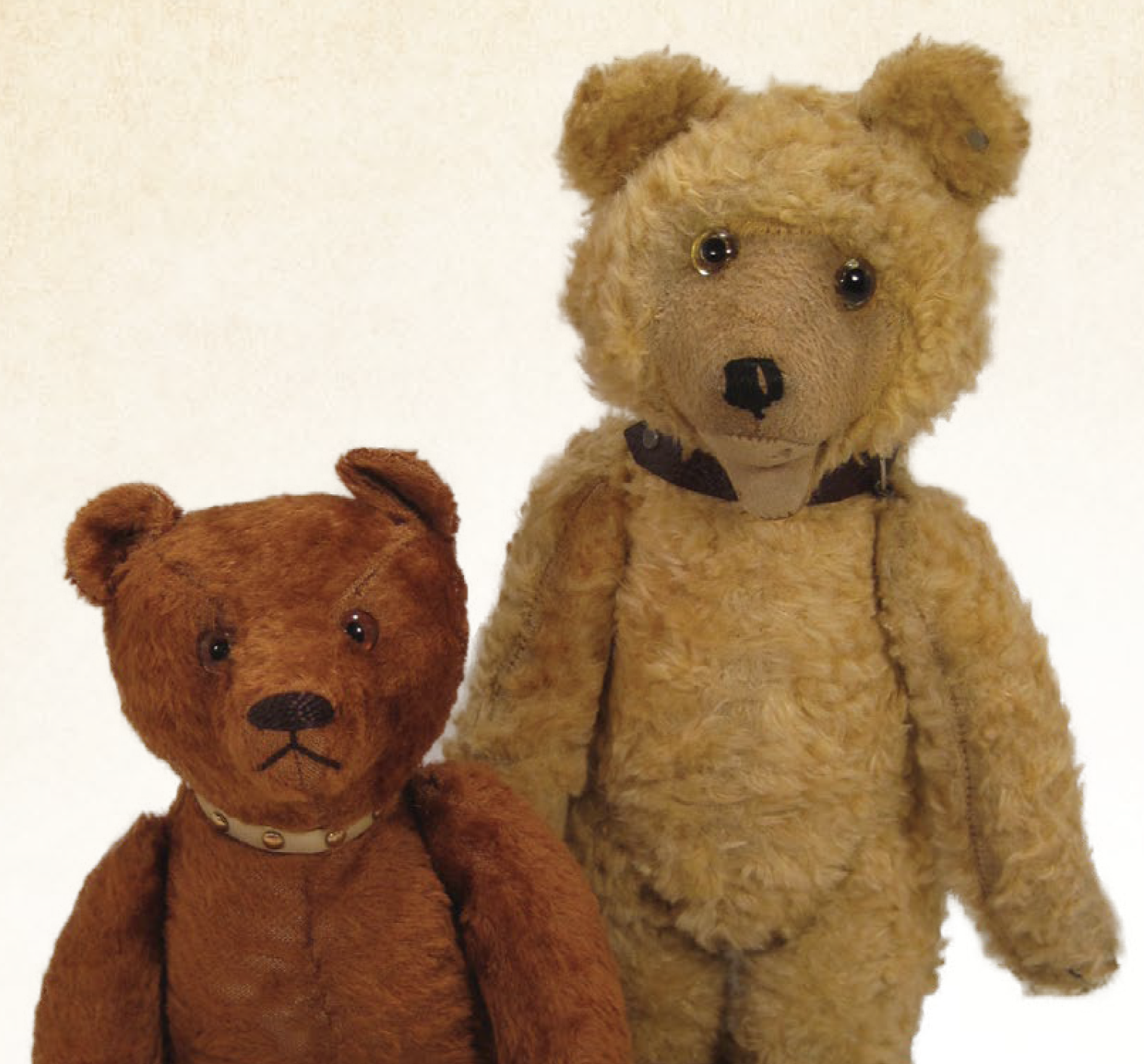
Steiff Late ’40s-Very Early ’50s
Bears from this period are wonderful finds, but can be hard to date. This is because some patterns were made pre-war, put away in storage, and buttoned and distributed post-war. Others were made, buttoned, and sold when the factory reopened for toy production in the late 1940s.
Staring in the late 1940s, the company worked tirelessly to rebuild its infrastructure as well as global reputation for toy-making excellence. It used all inventory and supplies on hand to help accelerate that process. In terms of materials, mohair and felt were still in short supply, so Steiff started producing some high-volume pre-war favorites, including its 1930s-era moody bear in artificial silk plush, a lesser quality substitute material.
In terms of identification, items from this time period were distributed to the marketplace with a variety of buttons, including the pre-war long and short trailing “f” buttons, a button with the word “Steiff” in block capital letters, and a blank button. Ear tags for the most part were yellow, but in some cases a white linen one was used. Many items were distributed without chest tags; others had pre-war-style named chest tags. As Steiff was located in the U.S. Zone in Germany, all items leaving the factory for a few years after the war had to have a linen “US Zone” tag sewn into a seam. These are generally noted on items though 1953 or so.
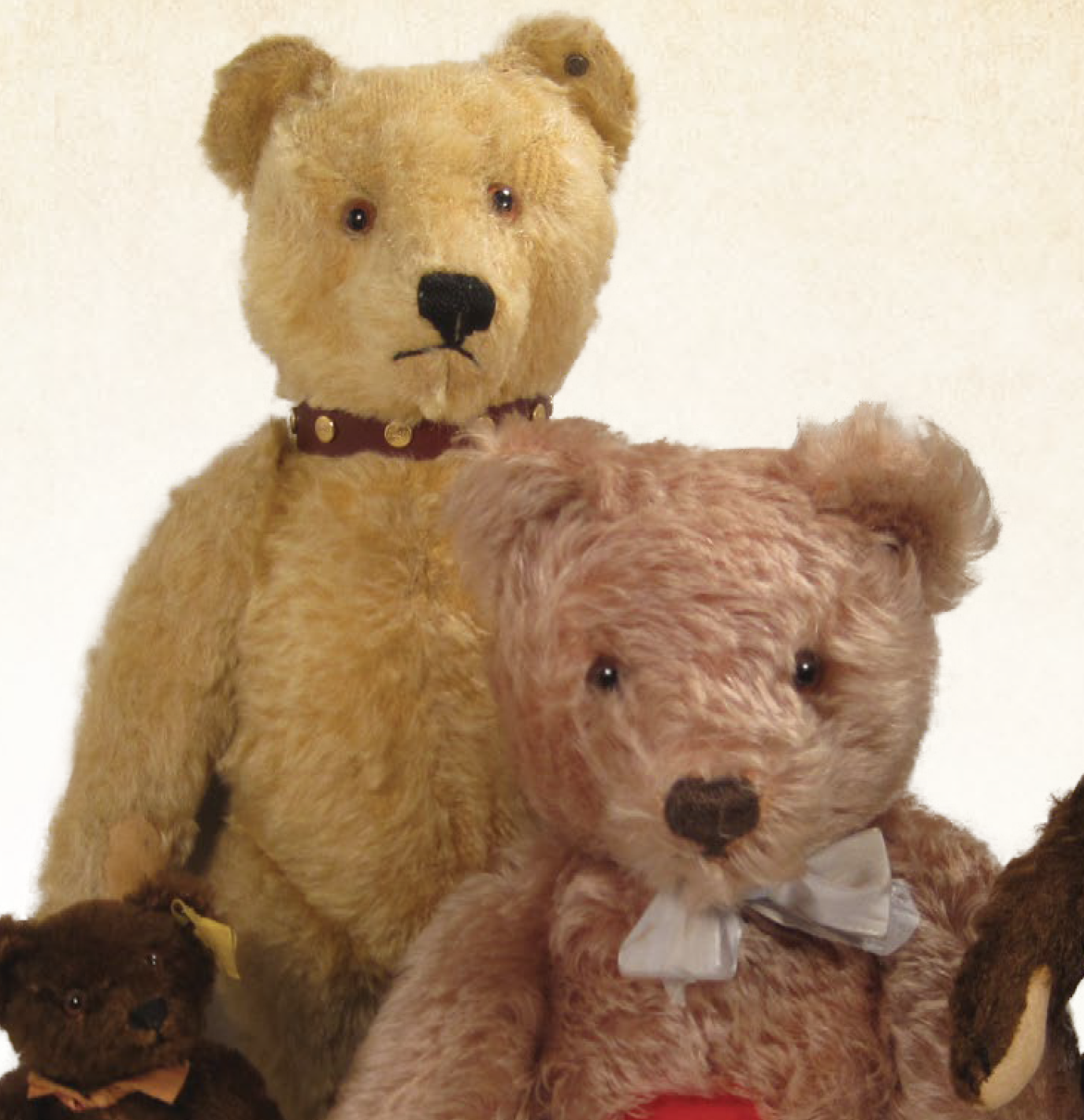
Steiff Early ’50s-Mid-’60s
By the early 1950s Steiff was well on its way to regaining its rightful place at the head of the teddy bear industry. In 1951, the company updated its legacy bear to reflect the trends of the day. Its Original Teddy Bear pattern now featured shorter, more compact limbs; rounded paws; a far less prominent back hump; a fuller face; and a new shield-shaped nose on larger versions.
Steiff introduced two distinctive bear models in the early 1950s. One was Jackie, a teddy designed to celebrate the 50th anniversary of the teddy bear in 1953. This sweet girl featured a portly body, pink nose stitch, and an airbrushed belly button. She appeared in the line in four sizes, ranging from 17 cm to 75 cm (about 6 ¾ to 29 ½ inches), through 1955.
Because of material rationing, mohair and felt were at a premium and not readily available to toy companies. As such, Steiff started using wool plush instead of mohair and linen material instead of felt on some of its bears. For the most part, Steiff’s items from this period were branded with a red-lettered chest tag, a larger, long trailing “f” button, and a red ear tag through 1935, followed by a red-lettered chest tag, a short trailing “f” button, and a yellow ear tag through 1943.
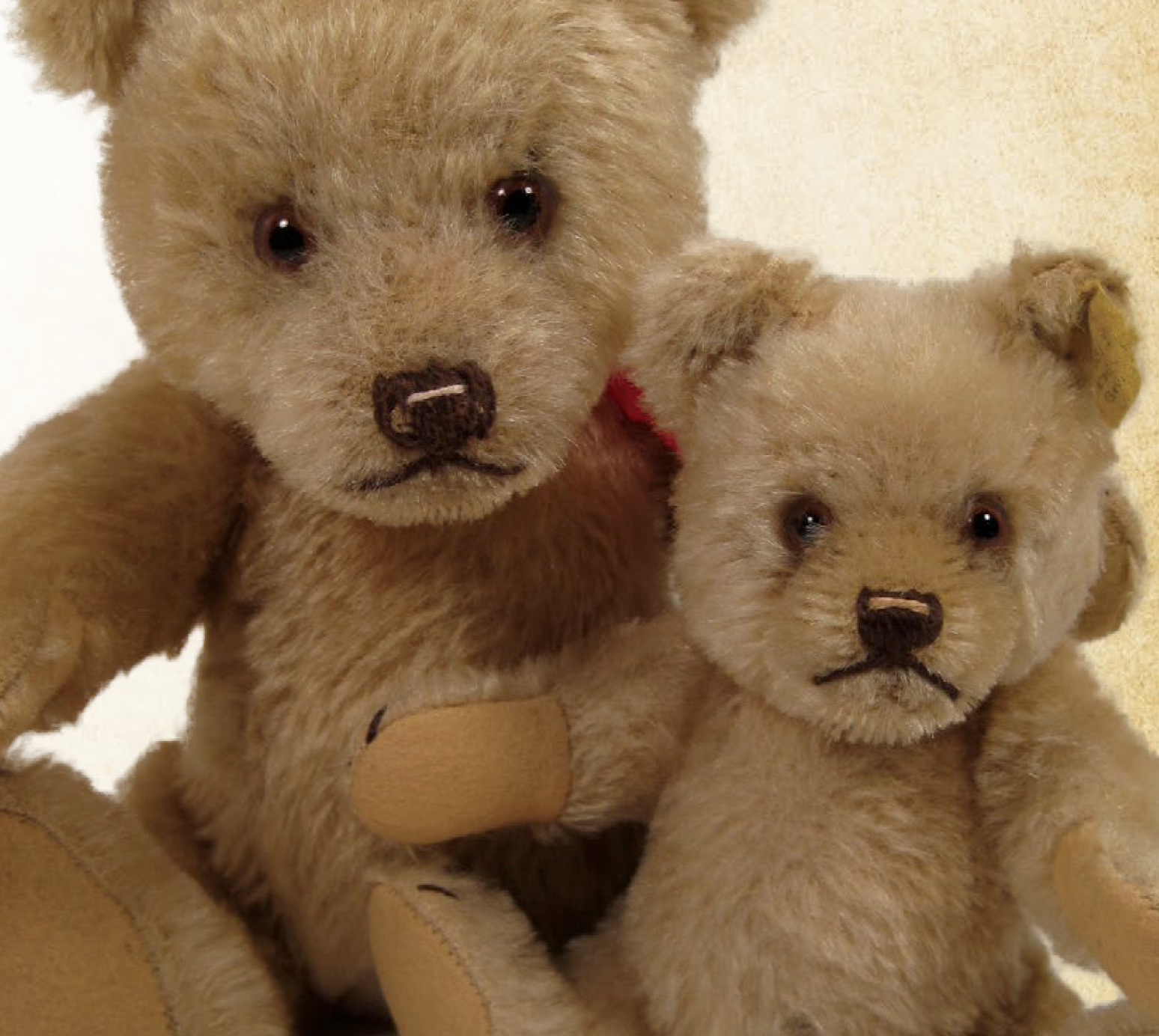
Steiff Late ’60s-Early ’80s
Steiff updated its Original Teddy Bear pattern once again in the late 1960s. Steiff’s standard cub now featured a distinctive, masked-shaped facial area, quickly earning him the Mask Teddy nickname. This prolific design was made from 1968 through 1990 and came in white, tan, caramel, and brown in sizes ranging from 11 cm (about 4 ¼ inches) through 100 cm.
Except for the introduction of the Mask Teddy design, Steiff’s teddy bear innovations were minimal during this period. A few models were produced in Dralon, a durable, synthetic plush, during the 1960s and ’70s. Popular Steiff models at the time included a Dralon Petsy and Cosy Teddy.
Steiff did make a number of changes to its tags and buttons that today help collectors more accurately date items from the late 1960s through the early 1980s. These included:
Buttons: In 1969, Steiff replaced its raised-script button pattern with a domed rivet button, aptly nicknamed the lentil button by collectors. It was used through 1978. In 1978, the lentil button was replaced with a riveted 8 mm and then 9 mm brass button design. Interestingly, a gold version of Steiff’s earlier raised-script button
made a brief appearance in the line from 1978 through 1980.
Chest tags: Steiff replaced its blue-imprinted bear-faced chest tag with a half-gold, half-red chest tag in 1972. This design was used through the early 2000s.
Ear tags: The company continued using its yellow linen ear tags though 1980. In 1981, Steiff introduced a woven-cloth ribbon-style ear tag. Slight variations were used through the mid-1980s and later replaced with a printed tape-style tag. Versions of the printed tape-style tags are still in use today.
